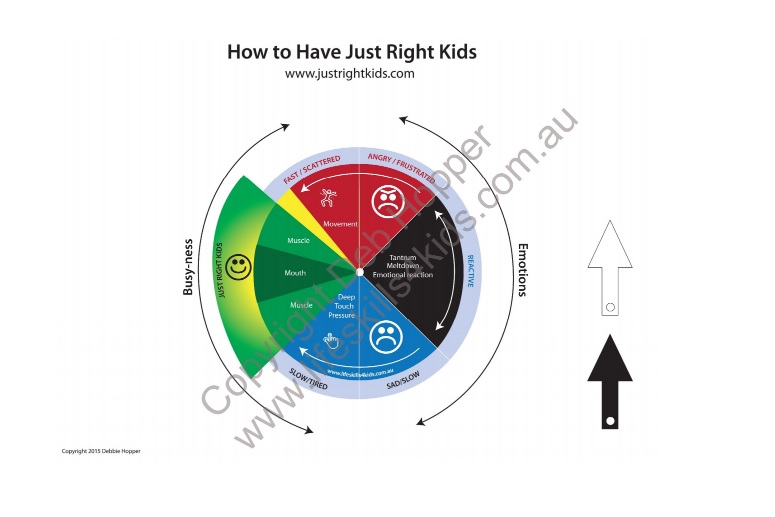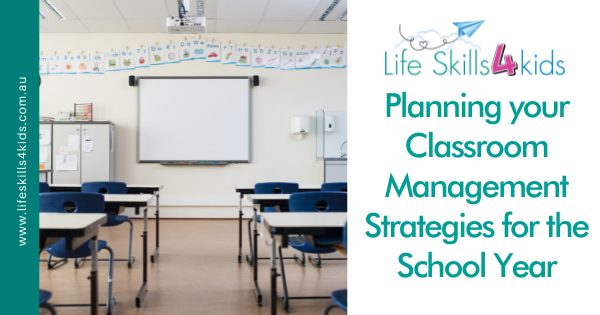Written By Deb Hopper, Occupational Therapist
Classroom management strategies are in class strategies that are developed over time by teacher. Teacher training, mentoring, trial and error and hours clocked in the classroom help teachers to fine tune these strategies as they develop their own personal classroom management strategies “personality”.
Classroom management refers to “the wide variety of skills and techniques that teachers use to keep students organized, orderly, focused, attentive, on task, and academically productive during a class.”
(http://edglossary.org/classroom-management/) Achieving these outcomes of having an orderly classroom with engaged students seems to come easier to some teachers than others, and may be reflective of a teacher’s level of experience. However, there are many factors that impact on the difficulty of achieving a balanced classroom management strategy, including the difficulty of the behaviour of the students and their ability to self regulate and modulate their behaviour.
Traditional views on classroom management focus on “compliance”, rules and strategies that make sure students are in the right place, at the right time, doing the right thing (being in their seats, standing in line, listening). This is important, but a more updated and more encompassing view of classroom management “extends to everything that teachers may do to facilitate or improve student learning” (http://edglossary.org/classroom-management/).
This includes :
– managing children’s behaviour
– creating a supportive environment (for more info click here)
– the expectations of teachers
– materials available for students
– activities and kinds of learning experiences planned by teachers
Your classroom management strategies for behaviour management
Often the behaviour management strategies in classrooms and schools are directed from the top, the school management team or school executive. There are clear guidelines on the policy of the expectations for behaviour in students and the procedure and program for how the behaviour management or positive behavior programs will run.
There is a clear process for how students who struggle with behaviour progress through the behaviour management process within the school system.
- How many warnings do they get?
- How are the warnings communicated to the child?
- Is there a visual system in the class that is uniform in the school, such as a traffic light system that links warnings to detentions to expulsions?
Often the behaviour management side is well documented and implemented. Of course, most schools also have a positive behaviour management system to, where children are awarded for being focussed, attentive, helping out and working towards bronze, silver and gold awards as one example.
Your classroom management strategies for emotional regulation and concentration.
While the behaviour management side is well documented and implemented in schools, I’d like to challenge you to consider what programs, strategies and other supports you have in your classroom to encourage and support your children to learn and improve on their emotional regulation, their self regulation and their ability to concentrate and focus in class.
Often the formal teaching of emotional regulation is left to specific classes focussed on increasing resilience. This is extremely important, but what is your individual classroom management plan to support students every lesson, every day of the week?
- How do you communicate the expectations of focussing on work?
- Do students understand “in their body” how they can focus and concentrate?
- How self aware are students of when their attention is flagging?
- How self aware are students when their bodies are fidgeting or their mind is wandering?
- Do students self identify and are they able to communicate when they feel frustrated, upset or angry?
Does your classroom management strategy include a visual for emotional and self regulation?
Using a whole class strategy for noticing, monitoring, commenting on, and developing strategies around self regulation can be both a teaching tool AND a preventative measure for avoiding needing to move into managing negative behaviours.
 Using the Just Right Kids model can be a fantastic start towards children understanding how they are feeling in regards to their
Using the Just Right Kids model can be a fantastic start towards children understanding how they are feeling in regards to their
1. Level of concentration and attention.
The left hand side of the model talks about how “busy” they are feeling in their body. Are they feeling (and moving) “fast” after coming in from recess, are they fidgeting with their fingers in their chair, are they rocking in their chair? Or are they feeling “slow” and tired?
Another way of thinking about this is how “fast” are their thoughts going? Do they have too many ideas that they don’t know where to start? Are their thoughts racing and “fast” because they are worried about something?
2. Level of emotions.
The right hand side of the model shows how children might feel emotionally. Are they angry? Are they sad? Have their emotions gotten out of control and are they in the “black crash zone?”
The black crash zone is when there has been a major incidence in the classroom or on the playground. This might involve aggression against a teacher or student or throwing of chairs or other furniture.
Why does the Just Right Kids model work so well?
Whenever I present the Just Right Kids model in my Just Right Kids workshops to parents and professionals, I always get comments about how excited they are to be able to go and use the Just Right Kids Model with their child, classroom and clients.
Why? Because many models out there focus on just the “emotional side” or the “busy-ness side” of behaviour.
The Just Right Kids model brings together both of these areas so that a child can clearly say “I feel ______ right now”.
By teaching a child to be able to label accurately how they feel by using the Just Right Kids Model as a tool, they become more self aware and mindful of how they are feeling. As a teacher, you can then offer some suggestions for what they could do to get back into the “just right” or happy and calm zone, such as going for a walk, running an errand, reading quietly in a corner or joining back into some group work.
The art of combining current behaviour management procedures with a self regulation model such as the Just Right Kids model.
Developing a combined self regulation model for student support and traditional behaviour management procedures can work really well.
By focussing day to day on helping your class to be able to identify how they are feeling helps them to be mindful about where they are on the Just Right Kids self regulation circle. This could be done both on an individual student level and on a group / class level.
- You can ask individuals how they are feeling and what colour they are? Eg “Hi class, can you tell me who is feeling calm, and ready to learn in the green zone?
- You can comment on the level of busy-ness in your classroom “Hi class, I think you are all in the red busy zone. How can we slow our bodies and our voices down so we can get back to the green concentrating zone?
- You can comment on a child’s emotional state, eg “Hi Zac, how are you feeling today? You look like you’re getting closer to the red zone and maybe a bit angry or frustrated about something. What’s happening for you?
It is also possible to link the Just Right Kids model to your behaviour management or traffic light system. For example, the red angry zone might be a warning card, or the black crash zone might lead to a detention or even suspension.
Classroom management strategies for managing emotions, level of concentration and negative emotions are best implemented by including some level of skill development in self regulation. By developing self regulation skills, students will be better able to self manage their emotions and their behaviour, leading to the reduction and prevention of negative behaviours in class.
To download your copy of the Just Right Kids Model, click here .
For more info on how to improve behaviour through changing up your classroom environment click here
For an explanation on using the Just Right Kids Model at home, you can find more info here

